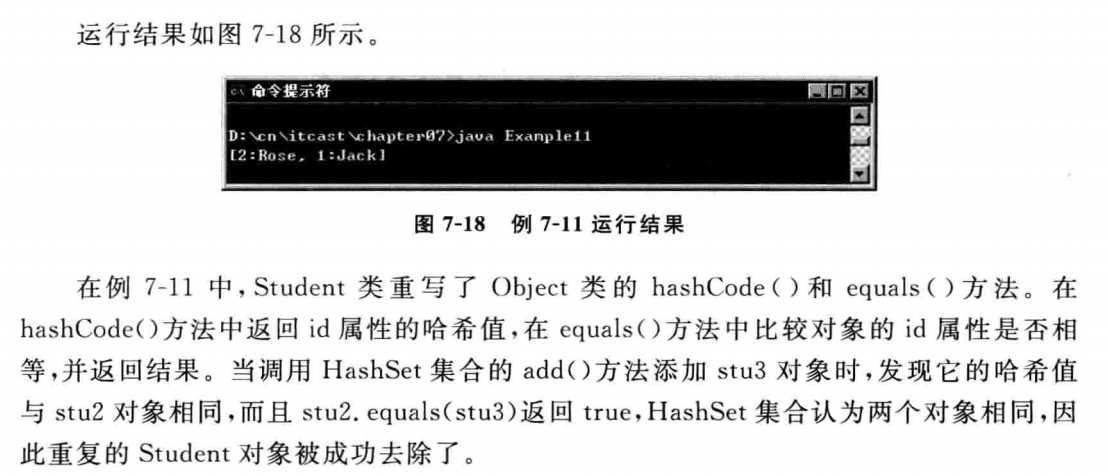标签:set 创建 print str this image add nbsp instance
一、HashSet
1.HashSet存字符串
import java.util.*;
class Student {
String id;
String name;
public Student(String id,String name) { // 创建构造方法
this.id=id;
this.name = name;
}
public String toString() { // 重写toString()方法
return id+":"+name;
}
}
public class Example10 {
public static void main(String[] args) {
HashSet hs = new HashSet(); // 创建HashSet集合
Student stu1 = new Student("1", "Jack"); // 创建Student对象
Student stu2 = new Student("2", "Rose");
Student stu3 = new Student("2", "Rose");
hs.add(stu1);
hs.add(stu2);
hs.add(stu3);
System.out.println(hs);
}
}


2.HashSet存对象
import java.util.*;
class Student {
private String id;
private String name;
public Student(String id, String name) {
this.id = id;
this.name = name;
}
// 重写toString()方法
public String toString() {
return id + ":" + name;
}
// 重写hashCode方法
public int hashCode() {
return id.hashCode(); // 返回id属性的哈希值
}
// 重写equals方法
public boolean equals(Object obj) {
if (this == obj) { // 判断是否是同一个对象
return true; // 如果是,直接返回true
}
if (!(obj instanceof Student)) { // 判断对象是为Student类型
return false; // 如果对象不是Student类型,返回false
}
Student stu = (Student) obj; // 将对象强转为Student类型
boolean b = this.id.equals(stu.id); // 判断id值是否相同
return b; // 返回判断结果
}
}
public class Example11 {
public static void main(String[] args) {
HashSet hs = new HashSet(); // 创建HashSet对象
Student stu1 = new Student("1", "Jack"); // 创建Student对象
Student stu2 = new Student("2", "Rose");
Student stu3 = new Student("2", "Rose");
hs.add(stu1); // 向集合存入对象
hs.add(stu2);
hs.add(stu3);
System.out.println(hs); // 打印集合中的元素
}
}

标签:set 创建 print str this image add nbsp instance
原文地址:http://www.cnblogs.com/thiaoqueen/p/6555427.html